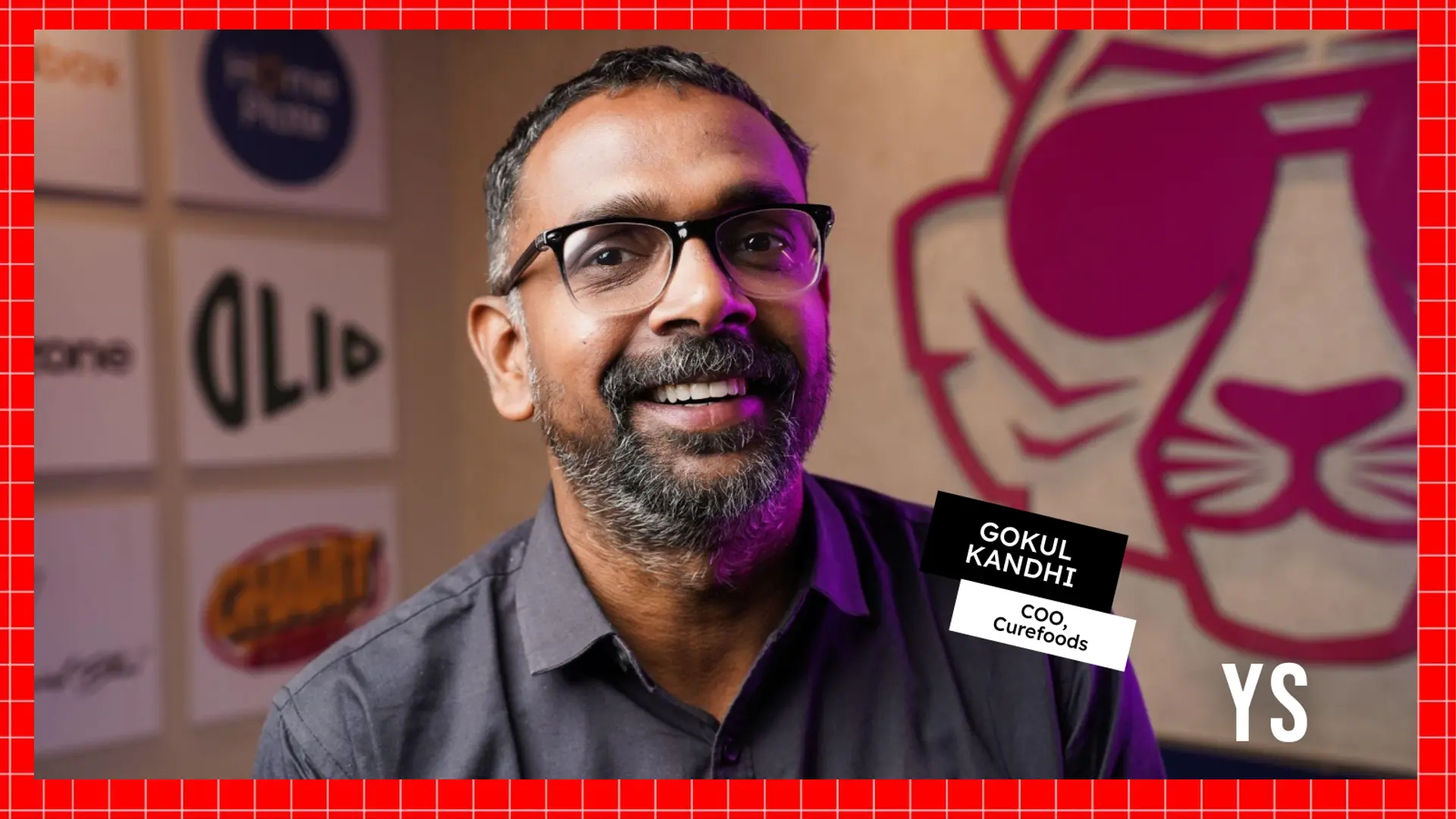Here's why Chinese tech companies are targeting emerging markets like India
In this episode of GGV podcast, Hans Tung, Managing Partner at GGV Capital and an investor, discusses why Chinese founders are targeting emerging markets like Southeast Asia, India, and Latin America, etc.
As the mobile internet market in China reaches a saturation, an increasing number of Chinese entrepreneurs are now eyeing other developing markets where mobile internet is just starting to take off. Many of these countries are seeing their internet sector dominated by Chinese companies.
In this episode of GGV Podcast with Zara Zhang, an investment analyst at GGV Capital, Hans Tung, the Managing Partner at GGV Capital and a seven-time Forbes Midas Lister, explains why Chinese entrepreneurs are going outside China to target consumers and users in emerging markets like Southeast Asia, India, Latin America, and even Africa.

Hans Tung
He explains the reason behind the “Chuhai” wave, how Chinese companies can best recruit local talent and bridge cultural gaps, and how can they avoid the same mistakes the US internet companies made when they came in to China.
Tune into this episode of the podcast here:
Zara Zhang: When did you start realising Chuhai or Chinese companies going overseas could be a big opportunity?
Hans Tung: I’m probably the first VC in the world to have coined the phrase Chuhai in 2013. I saw a few things that happened in 2012 that made me decide Chinese companies expanding overseas could be a huge opportunity for the next 10 years.
In 2011, WeChat came out with a well-designed product. Over the next 18 months, WeChat made a push into Taiwan, Southeast Asia, and India, and is now doing well in some of these countries. Chinese handset player Xiaomi also expanded and built a market beyond China. Alibaba also wanted to partner with SoftBank in Japan, and was looking at expansion and investment opportunities in Southeast Asia, which culminated with their investment in and future acquisition of Lazada in Southeast Asia.
It wasn’t just Alibaba and Tencent, but other companies were also trying to do ecommerce and gaming beyond China. I felt these teams can become more globalised and understand foreign culture better, have the skillset and the requisite knowledge of how to scale and build interesting internet companies outside of China.
ZZ: Why do Chinese entrepreneurs want to go outside China where mobile internet is just starting to take off?
HT: In 2013, I realised Chinese smartphone and internet users were around 300 million, PC internet users were about 600 million, and over the next five or six years they would reach a saturation point.
When the number of internet users expanded to three to four billion globally, the next two billion would have to come from outside of the US and China, specifically Southeast Asia, India, Latin America, and Africa. I felt Chinese internet founders were ready to take on the opportunity.
ZZ: You’ve said before that Chinese entrepreneurs can move to Jakarta. But it’s hard to imagine American founders wanting to go there. Why do you think that’s the case?
HT: It’s very difficult to go after an emerging market from your home country because time zone differences and the lack of feel of what’s happening on the street makes you less effective when controlling it remotely. So, to be effective, Chinese or American founders have to be willing to spend time in emerging markets on the ground.

Manu Jain, Managing Director and VP, Xiaomi India
ZZ: Why do you think emerging markets will look a lot more like China than the US?
HT: It’s very difficult for an emerging market to copy the US model and localise it because the stage of development is different for different countries. China spent many years copying the US models, but they had to customise it to make it work.
In fact, Chinese teams have less global exposure than the European and American teams. If the Chinese and the US companies are willing to do that with local champions in emerging markets, they will create bigger outcomes together in the long run.
ZZ: Do you think China offers a better model to replicate for these markets? What do the they need to pay attention to when they draw inspiration from their Chinese companies?
HT: I was introduced to Snapdeal in 2011-12 when they were a Groupon clone trying to find the next business model. I also made an investment in Flipkart, which has since become the Amazon of India.
Since then, some of the companies from emerging markets that are coming to China are trying to learn about what the Chinese companies did in the PC era.
In the initial phase, these businesses are trying to copy the model that’s worked elsewhere. Over time, as the local teams gain more experience and confidence, they realise that some of the problems they’re solving are common to what’s happening in different parts of China. But at the same time, there are going to be material differences. So, the key is to apply the differences to your advantage and leverage your knowledge to create something that’s more localised.
ZZ: When I meet Chinese founders, I sense this hubris because something worked in China means it will work in all other emerging markets. Can you comment?
HT: Fifteen years ago, a lot of American teams showed a lot of hubris when they came to China. They thought whatever works elsewhere around the world should work in China too. Unfortunately, some of the Chinese founders have that same degree of overconfidence as well. When you do that and you don’t show enough respect for the differences in local markets, you’re in for a rude awakening.
ZZ: What advice do you have for Chinese Chuhai companies that are trying to hire local talent?
HT: I think they need to start with hiring local people. If you can recruit talent locally that understands both China and the local market, they will be able to figure out the similarities and differences, and make adjustments accordingly.
ZZ: What about other types of talent? In markets like India, there are not many Chinese people who moved there a long time ago.
HT: In India, we see a lot of talent from Huawei, ZTE, and Alibaba who have operated a business on behalf of their Chinese companies, and ending up either coming out or joining startups that are tackling those markets.
If you don’t have overseas talent, the next best thing is to hire Chinese executives who have operated in those markets for a few years. If you can do that on top of the Chinese knowledge you have, your chances of succeeding will be much higher.
ZZ: Why do you think people who understand the supply chain in China cannot understand local consumers in these markets and vice versa?
HT: One of the best investments I made was probably in Wish. The co-founders came from Eastern Europe and China, met in a school in Canada, and were trained professionally in California before teaming up to start Wish. So, you have people from different parts of the world with a common background.
At the same time, they were willing to add a local team in Shanghai and were able to hire a lot of folks from China to help with the supply chain. Founders with different backgrounds willing to partner with different skillsets and working together are more likely to build more successful cross-border businesses.

TikTok's kicking the goalposts outside China with style.
ZZ: As investors, we’re faced with the question whether to pick the Chinese founders or the local ones. How should one choose?
HT: That’s a very tough choice. Whether it’s social networking, gaming, or ecommerce, it’s difficult to say which one is better than the other. We have seen successful examples in each of these categories.
When it comes to social networking, it’s easy to generalise and say the local team will understand local markets better. But then, there is ByteDance, Toutiao, and Douyin that came out with TikTok, which has done very well internationally with a team based in China.
I feel the key differentiation is not whether it’s a local team or Chinese team, but it’s really how fast the teams learn about what they don’t know.
ZZ: What are some examples of successful Chuhai companies, and what do you think was the key to their success?
HT: I think the original Chuhai company that has done well is Huawei. They have gone from a telecom equipment player to become a consumer-facing handset maker building a global operation.
When you look in the pure internet space, Toutiao and Douyin have done an amazing job with TikTok, and ByteDance is an impressive company that can expand beyond China. In ecommerce, both Shopee and Wish have shown that if you have the ability to understand local markets as well as training in the Chinese supply chain, you can build a successful business.
I think India has become the fastest-growing market for Xiaomi and they are number one here. To see a Chinese brand do well in a country that historically has not been as friendly or open to Chinese ideas is remarkable. I think a lot of credit goes to Manu Jain at Xiaomi India.
ZZ: In terms of picking markets, what do Chinese founders need to pay attention to?
HT: For India, Chinese handset makers tend to do well because that’s the first thing Indian consumers will need to buy to get online. For Southeast Asia, the ecommerce market is less competitive compared to India because the American players are not there as much.
I think Latin America is the place where both GDP per capita is high and the population base is big, and Didi did the right thing to acquire 99 in Brazil and leverage that platform to grow through Latin America.
Right now, going to India, Southeast Asia, and the Middle East is easier from China. But each of these three regions may have their own limitations. The local teams in Southeast Asia and India are learning so quickly that the advantage Chinese teams may have are less.
For the next five years, I still see Southeast Asia, India, and the Middle East as the most popular places.
ZZ: When we talk about Chinese tech companies, we came to the conclusion that ByteDance has the highest chance of becoming a global internet company. Do you think that still holds true?
HT: I think both ByteDance and Didi are showing that Chinese companies can expand beyond China. Both teams also have a lot of room for improvement and growth by becoming more internationalised and localised in the key regions.
What they lack is the understanding of the local markets, tastes, and needs. So, over time, as there are more innovations coming out of China, there are many opportunities in markets like Europe and Japan that are more developed.
(Edited by Megha Reddy)



![[Funding alert] KhataBook raises $25M in Series A led by GGV Capital, Partners of DST Global, Sequoia India, Tencent, others](https://images.yourstory.com/cs/2/a9efa9c02dd911e9adc52d913c55075e/khatabookteampicture21569840696854jpg?fm=png&auto=format&h=100&w=100&crop=entropy&fit=crop)
![[Podcast] Hans Tung on learnings from the Chinese startup ecosystem](https://images.yourstory.com/cs/2/eab8e5802d6a11e9aa979329348d4c3e/Image87fx1571375820262jpg?fm=png&auto=format&h=100&w=100&crop=entropy&fit=crop)




